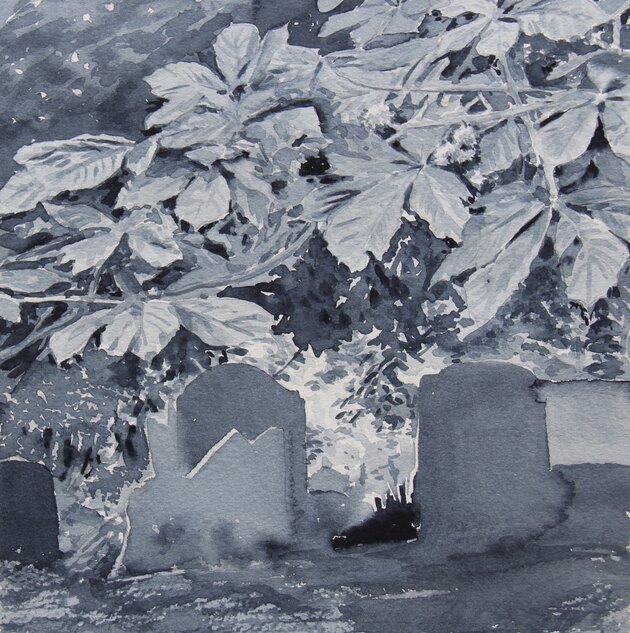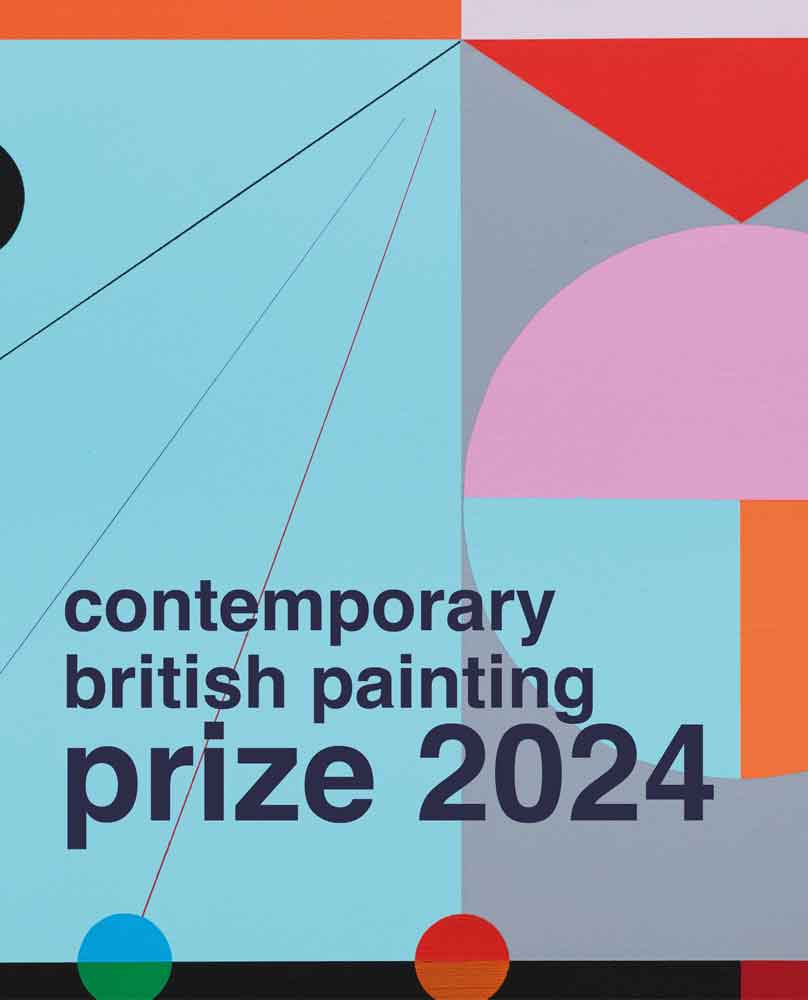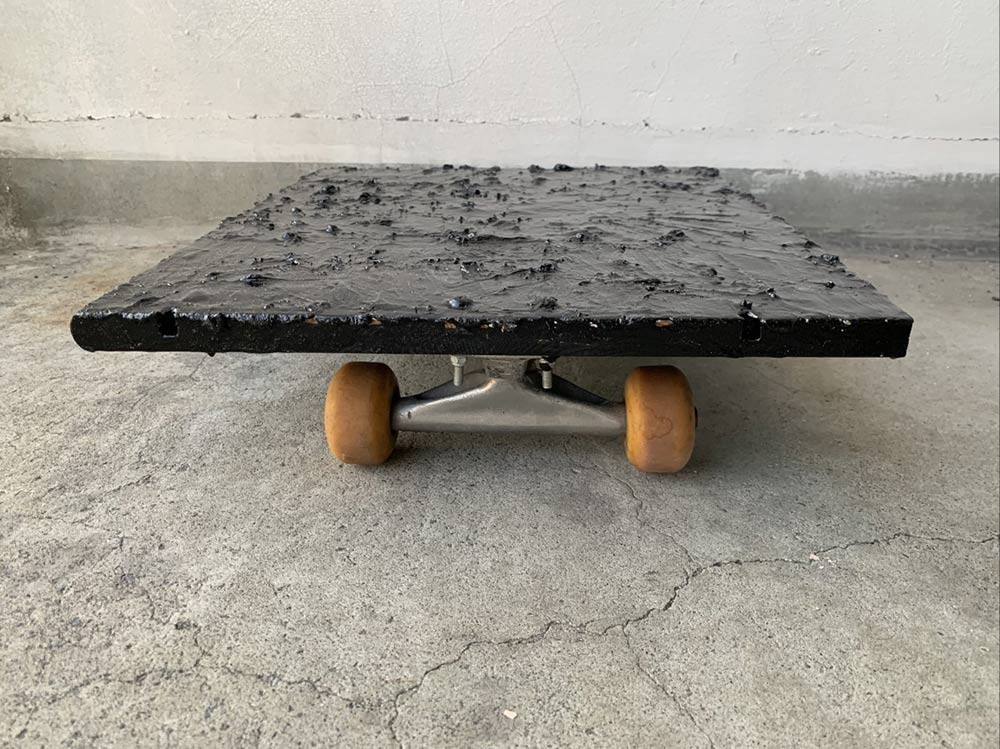Marguerite Horner: Artist of the Month
Artist of the Month December 2024:
Marguerite Horner, selected and interviewed by Paul Newman for CBP.
“Marguerite’s paintings lift the ordinary into the extraordinary, and the specific into the universal…they are about the seen and the unseen, the life behind the eye as well as the world in front of it” – Lady Marina Vaizey CBE, formerly the Art Critic for the FT and Sunday Times and a Turner Prize Judge

Perpetual Light, watercolour on paper 20cm x 20cm, 2024 
Hidden Mysteries, watercolour on paper, 20cm x 20cm, 2024
CBP: Your most recent works, starting with small square watercolours are coastal scenes, location not stated, from a high vantage point in what film making terms could be described as the ‘long shot’. Can you introduce the background to this series?
Marguerite Horner: This series of watercolours began when I traveled to Beachwood Canyon in LA, where my eldest daughter was living at the time, just after the Covid travel restrictions had lifted. While I was there, I visited friends who lived in Del Mar, further down the coast toward Mexico. I took a train along the California coast, and the sun was very low in the sky since it was winter, casting spectacular light on the water. In Del Mar, my friends took me to a place overlooking the beach, where I was captivated by the clarity of the light, with tiny figures silhouetted darkly against the brilliant sunlight.
I constantly take photos and videos because, early in my practice, I decided to base my work mainly on direct experience, avoiding mediated material, as I wanted my perception to be paramount. These captured images start my creative process: I spend time reviewing them, selecting those that catch my attention, zooming in on details that intuitively interest me. I reformat and desaturate them to reach a state I want to explore further in paint. I often prefer a vantage point from a height. This series continued with more images I gathered when my daughter moved to Malibu, where I stayed in a beach house right next to the ocean. I spent hours watching the sea, filming slow-motion videos of the waves, and capturing the sunrise and sunset on the same horizon. I was mesmerised.

CBP: These coastal locations evoke stillness and movement, the viewer perspective is still, observing, with the transition of people or vehicles moving across the picture and the tide back and forth. Can you talk about the notion of stillness and movement in these works?
MH: I’m often drawn to transient, ephemeral moments, which are sometimes in constant motion. With digital photography, I can now capture these moments more spontaneously and cost-effectively than in my early 20s, when film was expensive and had to be developed in a dark room. I discovered back then that my memory and perception of an experience differed significantly from what appeared on photographic paper. It’s this personal perception that I try to convey through paint. I need to be in a contemplative state to create, as stillness enables me to focus and translate these firsthand experiences into something that might tap into my subconscious.

Diamonds dancing on water, watercolour on paper, 20cm x 20 cm, 2023 
Diamonds dancing on water, oil on linen, 50cm x 50cm, 2023
CBP: The square format of your paintings is reminiscent of a polaroid. Where are the images for your paintings sourced from?
MH: As I mentioned, most of my images are drawn from personal experience, but I reformat them in the studio. The square format arose both from a desire to distinguish my work from photographic formats and from an early exhibition called 20/20, which required paintings to be 20 x 20 inches. I liked the result and decided to keep this format, freeing me from constantly rethinking it and letting me focus on content, similar to how Francis Bacon used two consistent canvas sizes for his work, larger ones for his full compositions and smaller ones proportionate to the dimensions of the faces within those works.

CBP: Can you talk about the transition from source imagery to small scale watercolours to larger scale oil paintings?
MH: I spend considerable time with my source imagery, sorting it into folders of potential paintings. This process is often marked by self-doubt, as I’m unsure where to focus my energy. Eventually, I choose the most compelling images and start small, usually on an area of 20cm x 20cm within a larger piece of watercolour paper, involving a lot of initial drawing and masking of areas I want to leave as pure paper before layering monochromatic washes. I don’t use white paint; if I need more highlights I’ll use the tip of a sharp blade to scrape away paint or if I need to lighten areas I lift the paint with a damp cotton-tip or tissue. This respect for the paper’s purity is important to me. I create many small paintings in this format, which I exhibit and sell, but they also inspire larger works on 50cm x 50cm or even 100cm x 100cm canvases. In the past, when I had a larger studio, I worked on canvases up to 182cm x 152cm, but practical constraints limit me now.

CBP: You statement presents a philosophical connection with your painting, the contemplation of it and of the world, without the painting being a copy or facsimile of it. You cite Maurice Merleau-Ponty and Carl Jung with these notions. Can you talk about both metaphor in your work and the painting as an object or thing itself.
MH: Certain objects or elements resonate with something deeper within me, and the act of translating these perceptions into paint often reveals my own feelings, sometimes even more to others than to myself. For instance, a friend once noted that my recurrent use of the house symbolised self-exploration, something I hadn’t consciously intended. I realise now that the images I’m drawn to are often metaphors for personal or spiritual themes I’m processing, representing feelings, fears, or desires I may not fully understand. Reading certain philosophers or writers often articulates my thoughts more clearly than I could, so I sometimes quote them to help convey what I’m exploring. The act of painting, I believe, gives shape to the intangible. The medium of paint allows me to channel these internal experiences into something concrete, turning the painting into an expression of my spiritual and emotional concerns rather than merely a representation.
CBP: The titles of your paintings and your exhibitions are enigmatic, can you discuss your strategy for titling in relation to your philosophical interests.
MH: I usually paint first, and titles come later when a phrase from a song or reading resonates with the image I’ve created. This process requires a state of reverie, as it’s not something I can force, it’s more like catching something that comes to me. It’s a bit mysterious.

CBP: On first perception your work is monochrome, with different variants of grey scale. However there are clearly pages of muted colour, for example the foreground fence of ‘Diamonds dancing on water’ and recent oil painting ‘Refuge on the roads’ The effect creates a particular ambience, feeling both remote and with a sense of nostalgia, almost filmic. Can you discuss the use of colour in your work?
MH: While studying for my MA in Fine Art at City & Guilds there was a moment that pushed me towards monochrome: a tutor suggested I leave an underpainting as it was, noting an energy that thick colour layers often masked. So I developed a palette based on James McNeill Whistler’s, using only two colours, a warm Madder Brown and a cool Prussian Blue, which vary in transparency and sometimes separate on the canvas, which I like. When I need colour, I use thin glazes or dabs of intense colour, allowing me to handle paint more spontaneously and freely.

CBP: As well as your recent body of work this article presents earlier examples of your work, including the graveyard of ‘Against it you cannot Rage’ (2021) the makeshift shanty dwelling of ‘Church’ (2017) and the reportage based image of Christine Keeler in ‘Papparazi’ (2013). Can you discuss these works briefly and their connection to the development of your overarching themes?
MH: ‘Against It You Cannot Rage’ (2021) reflects on the inevitability of life’s end, inspired by a graveyard I observed while comforting a friend. The makeshift structure in ‘Church’ (2017) portrays the Eritrean Church in the first Calais refugee ‘Jungle’ camp, a place of hope built amid harsh conditions.
‘Paparazzi’ (2017) is part of my Dear Christine… A Tribute to Christine Keeler series. When I was young, I vividly remember this scandal and wanted to present her without judgment. My values, deeply connected to spirituality, are expressed in all three works.


CBP: ‘Darkness and Light’ (2021) and ‘For Sale’ (2013) share the same striking composition of a vantage point divided by a broad angled tree trunk. Can you discuss any connections between these two works?
MH: Interestingly, I hadn’t noticed the compositional similarity until now. ‘For Sale’ (2013) explores the financial control patriarchal structures had over women, symbolised by a headless mannequin. ‘Darkness and Light’ (2021), reflects the struggle between our light and darker inclinations. Looking back, the recurring form of the tree trunk could be seen as a solid symbol of power and its dividing position in the compositions as a sign of divisiveness.

Darkness and Light, watercolour on paper, 20cm x 20cm, 2021 
For Sale, oil on linen, 50cm x 50cm, 2013
CBP: And finally, back to here and now, what projects are you currently working on?
MH: Currently, I am developing additional watercolours inspired by the California coast, hoping to translate their sensitivity into oils on canvas. I now recognise a connection between this series, focusing on the intense coastal light, and some of my earlier large paintings from 2004, such as ‘Faith pours from your walls’ and ‘Ever Deeper’. Those works were also inspired by the low winter light on the sea, this time the Cornish coast, and were closely tied to significant spiritual experiences triggered by loss. At the moment, several of my California inspired watercolours have been selected for open exhibitions, and I recently held a solo show in Mayfair titled ‘Perpetual Light’ (2024). This title came to me as I sat beside a close friend at the end of her life, feeling a powerful resonance with the phrase. My previous exhibition, ‘Numinous’ (2023) was recently published as a book by Hurtwood Press, with an introduction by Matt Price and essay by Dr. Matthew Holman. Again the title ‘Numinous’ came to me after completion of this body of work and is a term coined by a Lutheran Theologian, Rudolf Otto suggesting the presence of a divinity – a concept central to my artistic and philosophical interests.


Marguerite Horner graduated with an MA in Fine Art from City & Guilds in 2004 and won the Kidd Rapinet prize for outstanding degree work. She’s exhibited widely, including the Royal Academy Summer Exhibition, The ING Discerning Eye and the Royal Institute of Painters in Watercolour.In 2011 Marguerite exhibited at the 54th Venice Biennale and again in 2019 at the 58th Venice Biennale.
Marguerite has won numerous prizes including; (2018), the British Women Artist Award and has been shortlisted for the Ruskin Prize (2019) and the Trinity Buoy Wharf Drawing Prize (2018). In 2018 her work was acquired by the Yale Centre for British Art, USA. Her paintings are also in a number of private and museum collections in England, USA and China. In 2024 a book on her work ‘Numinous‘ was published by Hurtwood Press.
Recent solo exhibitions include; 2024: ‘Perpetual Light’ The Jesuit Centre, Mayfair. 2023: ‘Numinous’, The Crypt, St Marylebone Parish Church, Marylebone Road, London. 2022: ‘Back to Verve’, Chelsea Arts Club, Billiard Room, Chelsea, London. 2020: ‘Transcends All Understanding’ Bermondsey Project Space, London.
Recent group exhibitions include: 2024: ‘ING Discerning Eye: Mall Galleries, London. ‘Slow Painting: Surface Tension’, Studio Kind in Barnstaple and The Plough Centre in Great Torrington. ‘Assembly’, The Old Gym, Rye. ‘Royal Institute of painters in Watercolour’, Mall Galleries London, 2023: Regeneration, Hansard Studios, London. ‘ELEMENTAL Forces of Nature’ Landsdown Stores, Bath curated by Sandra Higgins. ‘X – Contemporary British Painters 10th Anniversary Exhibition’, Newcastle Contemporary Art. ‘Rogue Women 2, Rogue Studios, Manchester.
https://www.margueritehorner.com
Instagram: @marguerite_horner_artist










